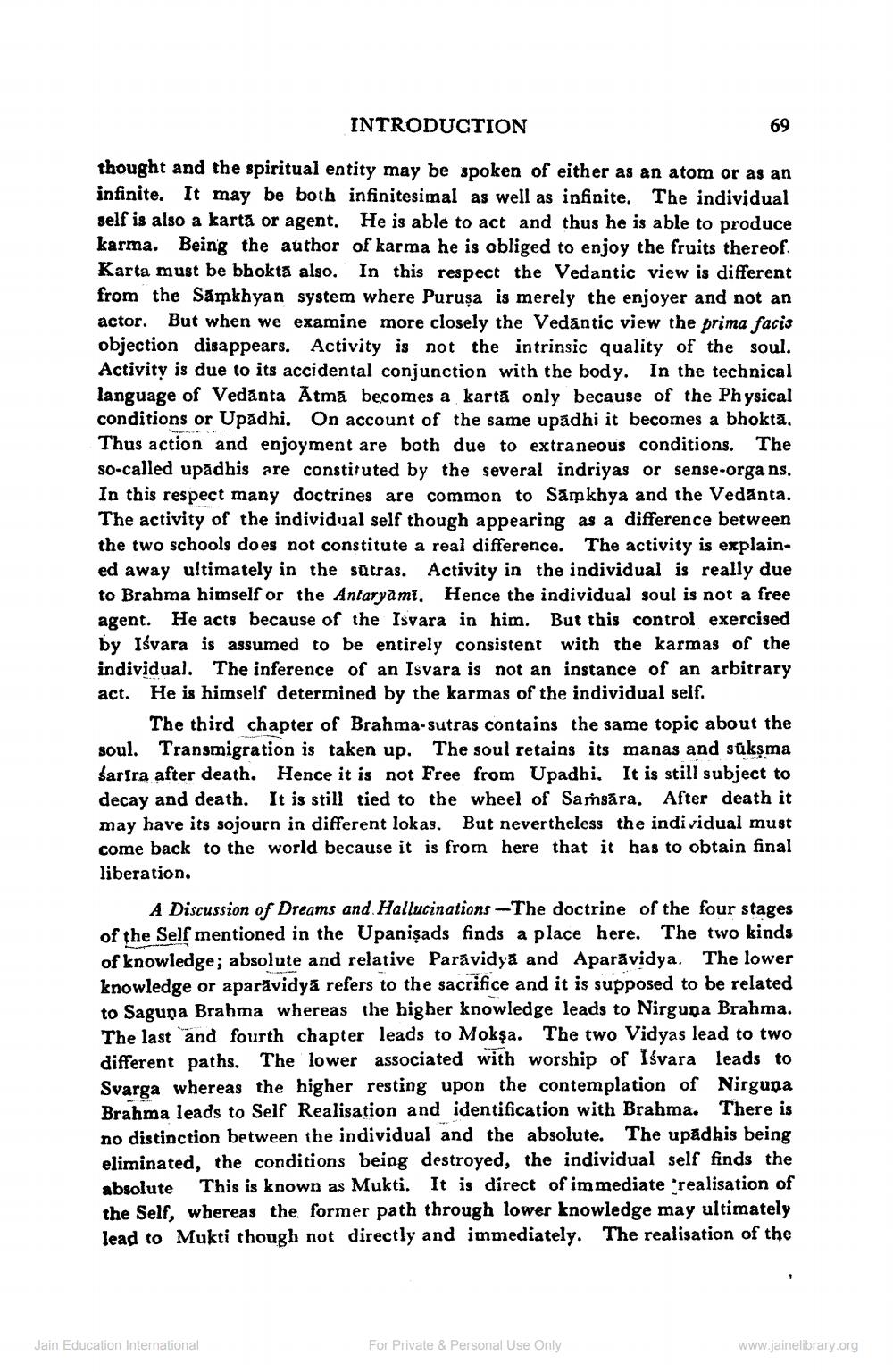________________
INTRODUCTION
69
thought and the spiritual entity may be spoken of either as an atom or as an infinite. It may be both infinitesimal as well as infinite. The individual self is also a karta or agent. He is able to act and thus he is able to produce karma. Being the author of karma he is obliged to enjoy the fruits thereof. Karta must be bhokta also. In this respect the Vedantic view is different from the Samkhyan system where Puruşa is merely the enjoyer and not an actor. But when we examine more closely the Vedantic view the prima facis objection disappears. Activity is not the intrinsic quality of the soul. Activity is due to its accidental conjunction with the body. In the technical language of Vedanta Atma becomes a karta only because of the Physical conditions or Upadhi. On account of the same upadhi it becomes a bhokta. Thus action and enjoyment are both due to extraneous conditions. The so-called upādhis are constituted by the several indriyas or sense-orga ns. In this respect many doctrines are common to Samkhya and the Vedanta. The activity of the individual self though appearing as a difference between the two schools does not constitute a real difference. The activity is explained away ultimately in the sätras. Activity in the individual is really due to Brahma himself or the Antaryāmi. Hence the individual soul is not a free agent. He acts because of the Isvara in him. But this control exercised by Iśvara is assumed to be entirely consistent with the karmas of the individual. The inference of an Isvara is not an instance of an arbitrary act. He is himself determined by the karmas of the individual self.
The third chapter of Brahma-sutras contains the same topic about the soul. Transmigration is taken up. The soul retains its manas and sūksma sarfra after death. Hence it is not Free from Upadhi. It is still subject to decay and death. It is still tied to the wheel of Saṁsāra. After death it may have its sojourn in different lokas. But nevertheless the individual must come back to the world because it is from here that it has to obtain final liberation.
A Discussion of Dreams and Hallucinations - The doctrine of the four stages of the Self mentioned in the Upanişads finds a place here. The two kinds of knowledge; absolute and relative Parāvidya and Aparāvidya. The lower knowledge or aparāvidyā refers to the sacrifice and it is supposed to be related to Saguna Brahma whereas the higher knowledge leads to Nirguna Brahma. The last and fourth chapter leads to Mokşa. The two Vidyas lead to two different paths. The lower associated with worship of Isvara leads to Svarga whereas the higher resting upon the contemplation of Nirguna Brahma leads to Self Realisation and identification with Brahma. There is no distinction between the individual and the absolute. The upadhis being eliminated, the conditions being destroyed, the individual self finds the absolute This is known as Mukti. It is direct of immediate "realisation of the Self, whereas the former path through lower knowledge may ultimately lead to Mukti though not directly and immediately. The realisation of the
Jain Education International
For Private & Personal Use Only
www.jainelibrary.org




